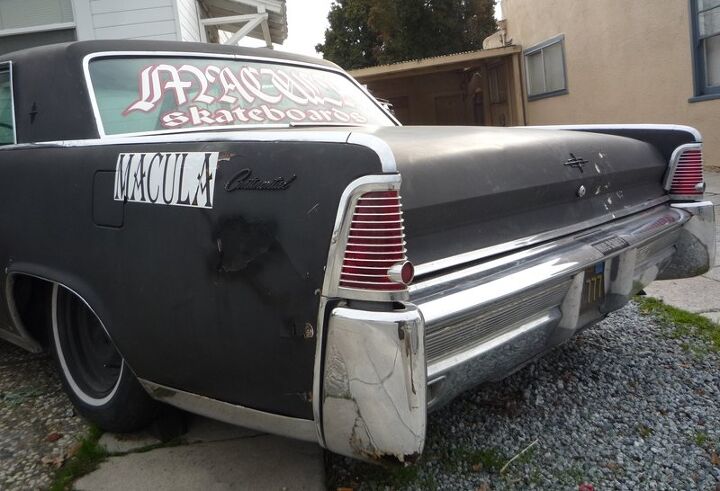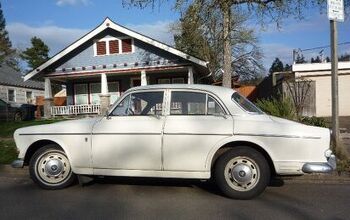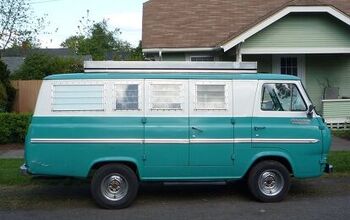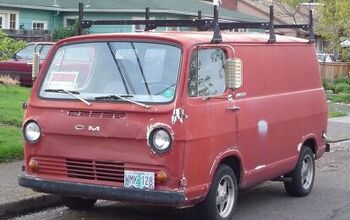Curbside Classic: 1965 Lincoln Continental

Most car design is evolutionary and derivative. Rarely does a manufacturer make a complete clean break with the past, and risk everything on a fresh stylistic new beginning. Except of course, when you’re at the end of your rope, and staring death in the face. Suddenly, anything, even something boldly original, is very possible and worth risking. It happened exactly once, in the modern history of Lincoln. Frankly, it wouldn’t be a stretch to say that it in terms of an existing car make, the 1961 Continental is about as clean a break from its predecessor model as any American car in the post-war era. The only other car that comes close in creating a similarly new and lasting design language is the 1960 Corvair, and that had no predecessor. We could surely use another ’61 Continental in these unoriginal times, but don’t hold your breath. Even near-death experiences don’t seem to have the same effect anymore.
As we covered in our brief Lincoln history, this once proud brand was on its last legs in the late fifties. Ford Corporate VP Robert McNamara was ready to pull the plug after huge losses on the ‘ 58-’60 flops and the Mark II. So a chance encounter of McNamara with a losing design concept for the ’61 Thunderbird changed everything, and created the iconic Lincoln style that it eventually stretched, mangled and mutilated for way too long.
Elwood Engel designed one of the two concept for the ’61 T-Bird design competition. Joe Oros penned the sportier design that was chosen, because it evoked the sporty original two-seat Bird of ’55-’57. But Engel’s boldly angular and slab-sided design made a lasting impression, and McNamara asked if it could be stretched a bit to become the new Lincoln. That also open up economies of scale in production, something McNamara was desperate for in trying to make Lincoln profitable. The ’61 Lincoln and the ’61 T-Bird share cowl structures and other sub-structure aspects, visible in what appear to be identical windshields. And they both were built side-by-side at the same Wixom plant specifically designed for large unibodies.
Looking closely at the original ’61 design, it’s easy to see that it started out as a two-door coupe. Imagine the B-pillar moved back a few inches, and the design really makes more sense than its four-door adaptation. It also explains the suicide doors: rear entry with that giant C-pillar and resulting short door was considered unacceptable for a luxury sedan, and the rear-hinged back door solution made it work. This was a relatively compact car for its class, especially in its interior space; a four door T-Bird, in essence, not unlike the real thing that came a long a few years later with the same suicide doors.
Since we’re on the subject of the ’61, I will say that it suffers from the same thing that many Ford products did in the late fifties under styling head George Walker. There was a lack of balance in the size of the greenhouse (upper structure) to the lower body. The ’61 Continental’s greenhouse might just barely have worked as a coupe, but as a sedan, from certain angles it looks as though the upper body is starting to melt down into the lower part. We discussed this in the 1959 Ford CC, and the Continental is the last of the Fords to show this. The ’60 Falcon broke cleanly with that approach, and the ’64-’65 Continental’s larger and longer roof line goes some way to remediate it; although at a price. The highly-curved side glass of the original went the way of cheaper flat glass for ’64-’65. That used to really bother me, as a destruction of the original’s design purity, but these later models really do have a more balanced greenhouse proportion fitting a luxury sedan.
As relatively compact as these Continentals were, it didn’t reflect in their weight; they still mostly weighed in at or above 5,000 pounds. And as such, it was a curiosity that the ’61’s engine was substantially detuned from its predecessors. Whereas the ’58’s 430 cubic inch MEL V8 made 375 (gross) hp, the ’61 was detuned with a two-barrel carb and made a mere 300 (gross) hp. It was somehow seen to be consistent with the image of the new Continental, to be above the fray of the horsepower and fin-height war being waged by Cadillac and Imperial. Zero to sixty took some eleven seconds, but who was actually counting?
By 1965, when our CC was built, power was up a bit, to 320 hp. And the three-inch wheelbase stretch manifested in improved rear legroom as well as better rear door ingress and egress. In 1966, the Continental suffered its first significant re-skin, with trendy rounded hips breaking the clean angularity of the design. But that wasn’t all that changed that year. Ford was determined to increase volume of the Lincoln and went the same route as Cadillac (and recently Toyota): reducing quality “fat” and de-contenting.
The original ’61 Conti was the subject of highly unusually and rigorous quality measures. Each engine was run on the stand for three hours at 3500 rpm (equal to 98 mph), and then partially torn down and reassembled. The automatic was tested for 30 minutes. The electrical system was especially sealed. And each car was driven over a varying 12 mile test course before being approved for delivery. By 1966, when prices were dropped to increase volume, any talk of these steps were long forgotten.
It’s worth pointing out that the ’61 Continental was actually not much of a sales success. The 25k units sold were only a modest improvement over the baroque ’60, although the recession of 1961 was a factor. But the price was a substantial jump over a Cadillac, which did make the early Conti a more exclusive vehicle. But the production rationalization of just the sedan and the remarkable four-door convertible, as well as platform-sharing with the T-Bird, facilitated profits for Lincoln and secured its future.
The Continental’s styling was also rather anodyne as well as controversial, and although 1961 marked a turn away from the excesses of the garish late fifties, the Lincoln may have suffered in the same way many cars that are somewhat ahead of their times. If it had flopped totally, it would have had the words “Airflow” stamped all over it.
Instead, it came to represent the youthful and refreshing newness of the Kennedy years; never mind that he took his last ride in one. The Continental was America’s last grasp at luxury car leadership, before it handed the baton to Mercedes. In the early sixties, it still exuded Detroit’s ability to be innovative and tasteful even in global standards; by the late sixties, Lincoln (and the rest of the bunch) had to retreat from that ambition, and begin catering to average Joes who aspired a long hood and the garish faux-trappings of luxury: over-plush upholstery, coach lights, landau tops, etc.. The understated elegance of the early sixties Continentals wouldn’t have worked for the new mission in life for America’s luxury brands’ last stand.
As such, these Continentals represent a profound changing of the guard. Love the styling or not, they are of great historical significance, and remind us of risks once taken and leadership once exerted. Like the Apollo moonshot, in the early sixties America could still walk the big talk. The moniker “Kennedy Lincoln” is ripe with meaning and associations, morbid and otherwise. But just like that optimistic moment in time is gone forever, so is the car that carried him. Shall we call the current version the “(Gerald) Ford Lincoln”, along with everything that implies?

More by Paul Niedermeyer
Latest Car Reviews
Read moreLatest Product Reviews
Read moreRecent Comments
- SPPPP I am actually a pretty big Alfa fan ... and that is why I hate this car.
- SCE to AUX They're spending billions on this venture, so I hope so.Investing during a lull in the EV market seems like a smart move - "buy low, sell high" and all that.Key for Honda will be achieving high efficiency in its EVs, something not everybody can do.
- ChristianWimmer It might be overpriced for most, but probably not for the affluent city-dwellers who these are targeted at - we have tons of them in Munich where I live so I “get it”. I just think these look so terribly cheap and weird from a design POV.
- NotMyCircusNotMyMonkeys so many people here fellating musks fat sack, or hodling the baggies for TSLA. which are you?
- Kwik_Shift_Pro4X Canadians are able to win?










































Comments
Join the conversation
Paul: If you're in the Santa Cruz area, then you're close enough to visit the Blackhawk Museum in Danville. They have the finest example of a 1961 Continental in the world. It is not the actual presidential limousine, but a short wheelbase version from the same fleet. It's a short wheelbase version with the great vinyl top and spectacular blue interior. After all these years, it still looks more "presidential" than any presidential limousine, before or since.
Many years ago I owned a 65 in midnight blue metallic with a charcoal roof. Loved that car.